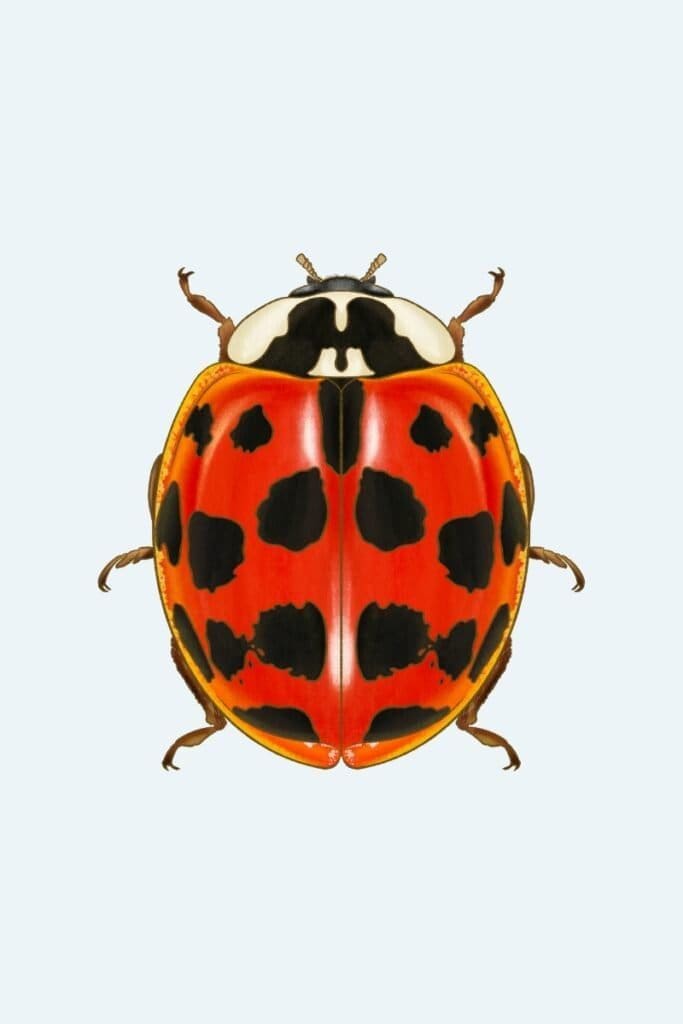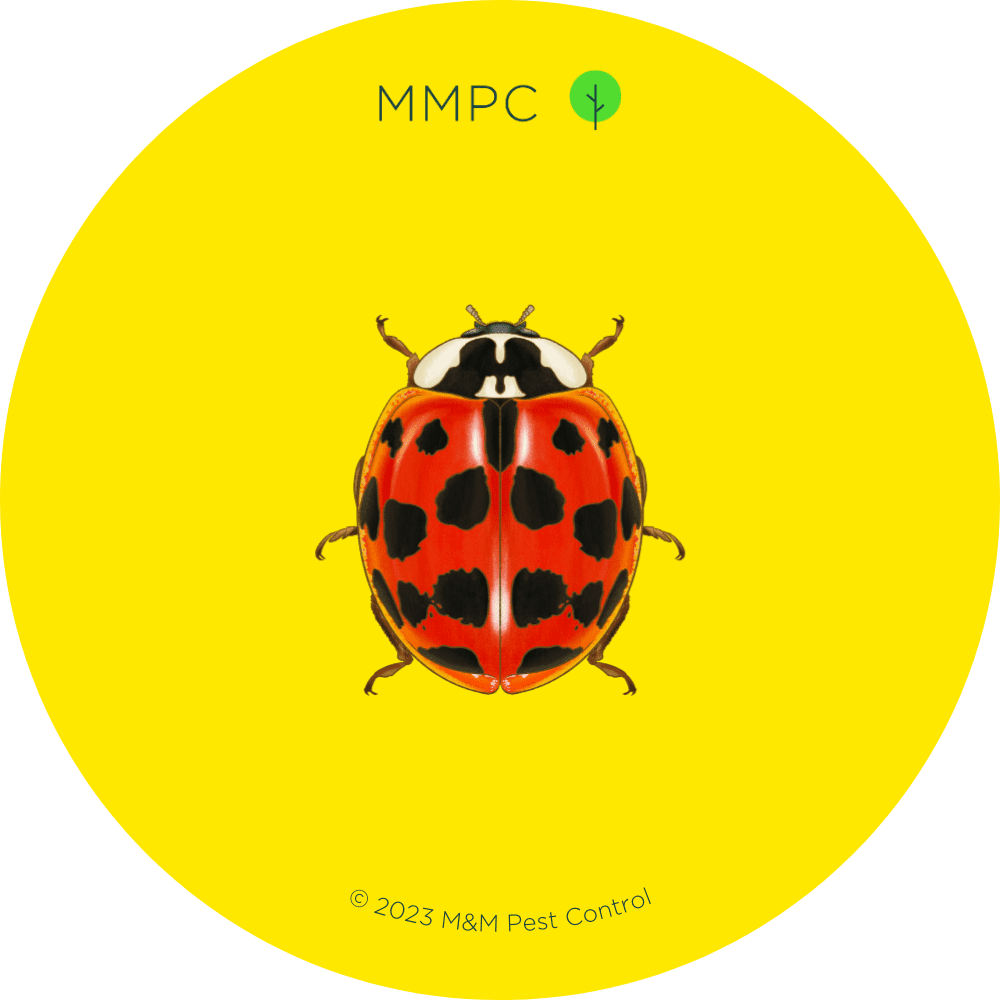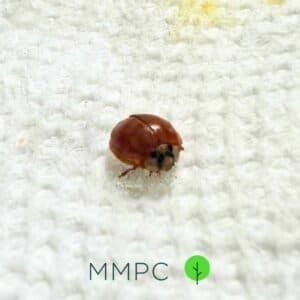Asian Lady Beetle Identification & Control

What Are Asian Lady Beetles?
The multicolored Asian lady beetle (Harmonia axyridis) is an insect that feeds on aphids and other plant-eating insects. Native to Asia, these beetles were introduced to the US in 1916 to help manage agricultural pests. However, in urban areas they can become a nuisance when they invade homes and buildings, especially during the fall when they swarm in large numbers to find a place to overwinter.
Appearance
Adult multicolored Asian lady beetles vary greatly in appearance, with colors ranging from yellow-orange to red. Their wing covers may have numerous black spots, no spots at all, or even two to four red spots on a black background.
The most distinguishing feature is the black ‘M’ or ‘W’ marking on the white pronotum (the area behind the head), which helps differentiate them from native North American ladybug species..
Behavior
These insects are known for forming large aggregations with up to tens of thousands of individuals. During the fall, swarms of Asian lady beetles congregate on light-colored buildings and sunlit areas. While searching for warm, protected areas to overwinter, they occasionally get indoors where they remain dormant in walls and attics.
Risks
Asian lady beetles are more of an inconvenience than a harmful pest. While they can bite, their bites are harmless (though a small number of people may experience an allergic reaction). When agitated, they release a yellowish fluid (hemolymph) in a defensive behavior known as reflex bleeding, which contains foul-smelling chemicals that stains walls and fabrics.
Identification

Multicolored Asian Lady Beetles
Asian lady beetles are often confused with native ladybugs but exhibit a wider range of color patterns.


Size: 1/4″ – 1/3″ (6 – 8 mm)
Color: Several color patterns (morphs) ranging from yellowish-orange to red, with or without black spots
Identifying Features:
- A round, dome-shaped body with hardened forewings (elytra) covering the abdomen
- The head and pronotum are white, with black markings in the shape of a ‘M’ or ‘W’
- Depending on the morph, it may have a yellowish-orange or red shell with anywhere from 0–22 black spots, or a black shell with 2–4 red spots
- Short, clubbed antennae
- 6 thin, reddish-brown legs
Control

How to Get Rid of Asian Lady Beetles
The best way to prevent Asian lady beetle infestations is through exclusion. Sealing cracks and gaps around windows, doors, and utility pipes is essential to keeping beetles out during the fall.
If you encounter them indoors, we recommend vacuuming to remove them. Take care to avoid crushing the beetles, as their reflex bleeding can stain surfaces. One way to do this is by securing nylon stockings around the opening of a hose attachment or crevice tool. This traps the beetles before they enter the vacuum cleaner, preventing damage to the machine and avoiding contact with their fluids.
FAQs
Asian Lady Beetles vs Lady Bugs: What’s the Difference?
Asian lady beetles are often mistaken for native ladybugs due to their similar size and shape. The former are more aggressive than the latter, and tend to form large aggregations inside homes during the fall.
The best way to identify them is by looking for the black ‘M’ or ‘W’ shape on the pronotum, which is not found on native ladybugs.
Our Services


Severe infestations of Asian lady beetles may require ongoing treatments from pest control professionals. Insecticide sprays can be applied around the exterior of buildings to create a barrier that prevents beetles from entering. This is most effective when applied before the beetles enter homes for overwintering.
Need help getting rid of Asian lady beetles? Talk to one of our pest experts today.


